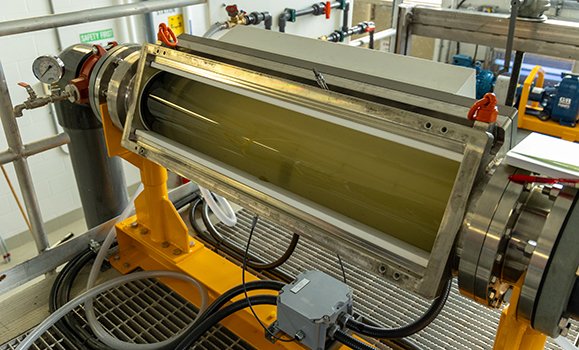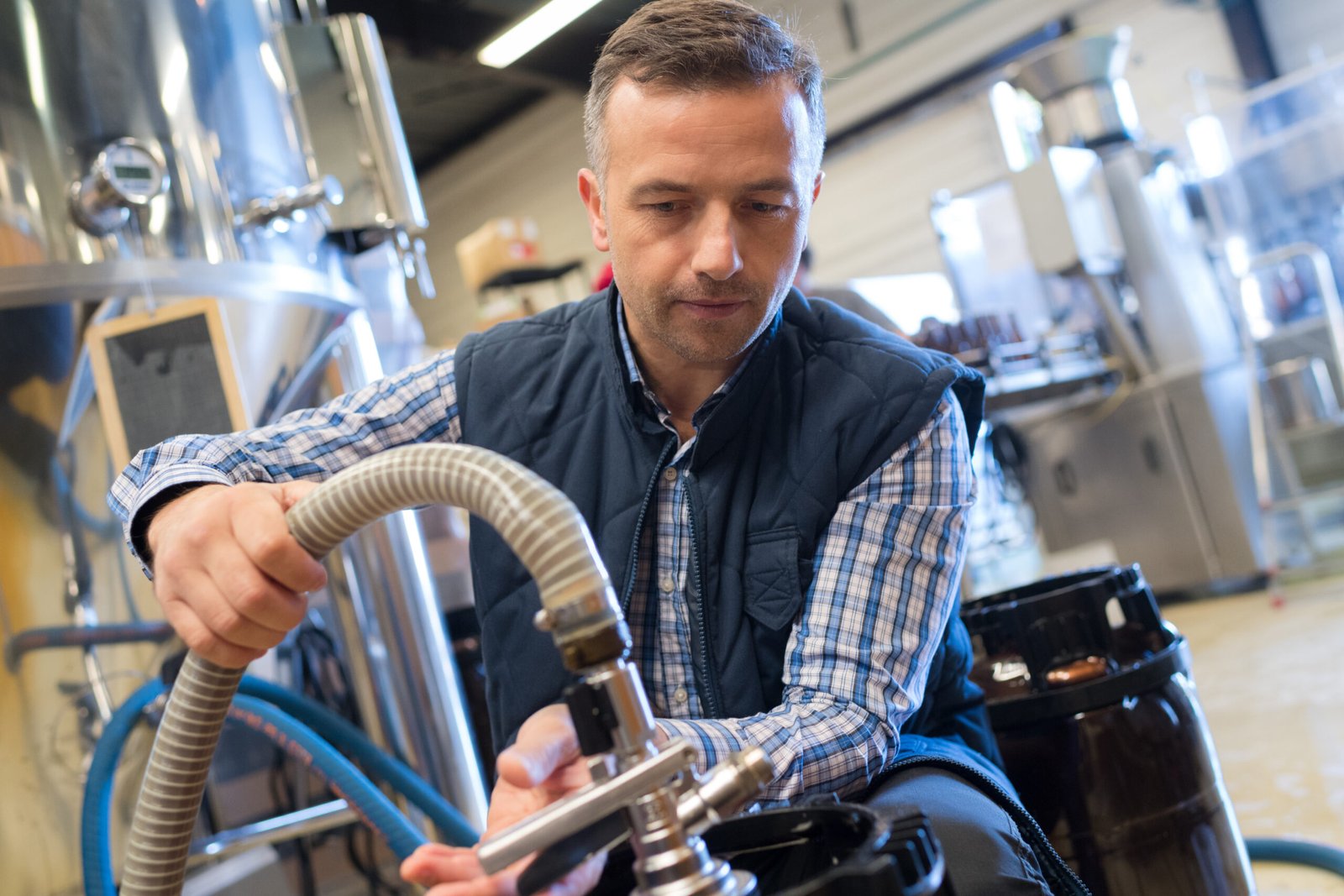
Light-Emitting Diode (LED) UV Systems in Wastewater Treatment: Efficiency and Applications

Light-emitting diode (LED) UV systems are revolutionizing the approach to disinfection in wastewater treatment facilities. By harnessing the power of ultraviolet (UV) light, these systems offer a chemical-free method for effectively inactivating pathogens in wastewater. Compared to traditional UV sources, LEDs operate with greater energy efficiency and possess a longer lifespan, enabling more sustainable and cost-effective treatment operations.
The integration of LED UV technology into wastewater treatment plants aligns with the growing trend towards environmentally friendly processes. LEDs emit light at specific UV wavelengths that are critical for disrupting the DNA of harmful microorganisms, thereby rendering them harmless without the use of harsh chemicals. This precise control also allows for the customization of treatment based on the unique demands of a facility, ensuring that water is treated thoroughly before it is discharged back into natural waterways or reused.
Key Takeaways
- LED UV systems present a sustainable alternative for chemical-free disinfection in wastewater treatment.
- These systems offer precise control by emitting UV light at specific wavelengths to effectively inactivate pathogens.
- Increased energy efficiency and a longer lifespan of LEDs make them a cost-effective solution for modern wastewater management.
The Fundamentals of LED UV Systems
LED UV systems represent a significant advancement in water treatment technologies, utilizing the unique properties of LEDs to irradiate water with ultraviolet light. This process effectively disinfects wastewater by inactivating harmful microorganisms without the use of chemicals.
Physics of LEDs
Light-emitting diodes (LEDs) operate on the principle of electroluminescence, a phenomenon where light is emitted from a material when an electric current passes through it. An LED is a semiconductor device that converts electrical energy into light energy. UV LEDs utilize materials that emit ultraviolet light, which is particularly effective for disinfection purposes.
Components and Design
An LED UV system is composed of multiple key components:
- UV LEDs: Sources of ultraviolet light.
- Heat Sink: A device that dissipates heat away from the LEDs to prevent overheating.
- Optical Lens: Focuses the UV light for efficient use.
- Driver Circuitry: Regulates the power to the LEDs.
The design of these systems aims to maximize UV exposure while maintaining energy efficiency and a compact form factor. Effective system design ensures uniform UV light distribution and optimal wavelength emission for target microorganisms.
Types of LED UV Systems
LED UV systems can be categorized by their application and configuration:
- Inline LED UV Systems: Installed within the water treatment pipeline.
- Submersible LED UV Systems: Designed to be placed directly in the water body.
- Reactor Chamber LED UV Systems: Utilize a chamber through which water passes for UV exposure.
Each type is engineered to suit different scales of water treatment—from small, portable units to large-scale industrial systems.
Advantages of LED UV Technology
When considering UV systems for wastewater treatment, LED UV technology stands out due to its several distinct advantages, including superior energy efficiency, enhanced longevity and reliability, and its beneficial safety and environmental impact.
Energy Efficiency
LED UV systems are regarded for their ability to consume less energy compared to traditional UV sources. Specifically, LED units can produce a higher output of UV light per watt of electrical power input, leading to noteworthy energy savings. For instance, a consumer guide to energy-efficient lighting suggests that LED lights can have significant energy savings, which extrapolates to LED UV systems in wastewater applications.Energy-Efficient Lighting. Such systems can be tailored to operate at optimal wavelengths, thus optimizing the UV radiation for wastewater treatment processes, which further enhances their energy efficiency.
Longevity and Reliability
LEDs are renowned for their long service life. In an LED UV system, the diodes often last longer than conventional UV lamps, reducing the frequency of replacements. They are built to be resilient and maintain a consistent UV output over time. Additionally, LED UV systems commonly come with robust designs that can withstand various operational conditions, translating to reliability in disinfection performance.
Safety and Environmental Impact
Safety and environmental considerations are paramount in wastewater treatment. LED UV systems do not contain harmful substances such as mercury, which is present in traditional UV lamps, mitigating potential environmental hazards and simplifying disposal procedures. Furthermore, they operate at lower temperatures, reducing the risk of heat-related accidents and contributing to a safer work environment. This combination of factors underscores LED UV technology as a safer and more environmentally friendly choice for wastewater disinfection.
Wastewater Treatment with LED UV Systems
LED UV systems represent an innovative solution in the domain of wastewater treatment, leveraging UV light’s properties to disinfect water effectively.
Disinfection Mechanism
The disinfection mechanism of LED UV systems involves the utilization of ultraviolet light emitted by LEDs to break down the DNA of pathogens in wastewater. This light, specifically in the UV-C spectrum, has the power to inactivate bacteria, viruses, and protozoa, making them harmless. Due to their peak emission wavelengths being close to the optimal germicidal wavelength of 265 nm, LED UV systems are found to be highly effective for this purpose.
Applications in Wastewater Treatment
LED UV systems are employed in various settings, ranging from small-scale residential water purification systems to larger municipal wastewater treatment plants. Their adaptability and efficiency allow them to meet diverse treatment needs. For instance, studies detail that UV LED exposure results in significant E. coli reduction in water. Their application is particularly beneficial in reducing coliform bacteria levels in wastewater, albeit with varying effectiveness based on the turbidity of the wastewater.
Regulatory Compliance
When selecting LED UV systems for wastewater treatment, it’s critical to adhere to regulatory compliance standards. These standards ensure that the system’s disinfection efficacy meets the required public health and safety guidelines. Regulations often specify the intensity and exposure time necessary to achieve a satisfactory treatment level, thereby mandating system capability to effectively manage pathogen loads while operating within the set parameters.
Installation and Maintenance
Integrating Light-emitting diode (LED) UV systems into wastewater treatment requires careful planning and consideration. Particular attention must be given to the technical specifications during installation and the anticipated costs of operation and maintenance.
Installation Requirements
For the installation of LED UV systems in wastewater treatment, specific infrastructure must be in place. This includes electrical services that can support the low energy demands of LED technology, as well as structural accommodations within the treatment plant to house the UV reactors. Furthermore, the hydraulics of the plant must be compatible with the flow rate requirements of the LED UV system to ensure maximum disinfection efficiency.
The LED units must be positioned to achieve optimal exposure to the wastewater stream, which often necessitates precise calibration. Additionally, personnel should be trained on the installation process to avoid any potential mishandling that could damage the delicate LED components.
Maintenance and Operational Costs
LED UV systems generally boast lower operational costs compared to traditional UV systems, mainly because of their energy efficiency and long service life. A typical LED UV lamp may last for over 10,000 hours of operation, which reduces the frequency of lamp replacements.
Maintenance activities typically include regular cleaning of the UV light enclosure to prevent fouling, along with routine checks of system diagnostics to ensure that the LEDs are operating at the correct intensity for effective wastewater treatment. Maintenance costs can be minimized by adhering to a scheduled service plan, thus avoiding the higher expenses associated with emergency repairs.
To preserve the longevity and efficacy of LED UV systems, operators must adhere to manufacturer guidelines for both operation and maintenance procedures. This approach helps to ensure that system performance remains consistent, while also allowing for predictable operational budgeting.
Emerging Trends and Future Developments
LED UV systems for wastewater treatment are at the forefront of technological advancement, with ongoing research driving innovation and market forces influencing growth.
Research and Innovations
Developments in UV LED technology have led to increased efficiency and effectiveness in wastewater disinfection. Recent research explores the potential of ultraviolet light emitting diodes (UV-LEDs) which offer advantages including compact size, shock resistance, and energy efficiency. In particular, studies demonstrate their applicability in disinfecting domestic wastewater for safe discharge or agricultural reuse, critical for water-scarce regions.
Additionally, advancements in materials and engineering have resulted in UV LEDs with prolonged lifespans and higher output ranges, making them more suitable for large-scale applications. Work is being done to optimize UV LED arrays for maximum pathogen inactivation, while simultaneously reducing power consumption. One noteworthy example involves the successful integration of UV LEDs with photovoltaic cells, promising a sustainable approach by utilizing solar power for wastewater treatment.
Market Growth
The market for UV LED technology in wastewater treatment is expanding rapidly as regulations become stricter and the need for sustainable technologies grows. Investment in LED UV systems is increasing globally, with predictions suggesting a substantial market expansion by 2024. This growth is supported by the rising adoption in various sectors, including municipal and industrial water treatment facilities.
Moreover, the economic benefits associated with the use of UV LED systems—such as lower operational costs compared to traditional mercury-vapor UV lamps—are fueling adoption. Continuous demand for environmentally friendly and chemical-free disinfection methods is likely to propel further the market for LED UV systems. Key players in the industry are focusing on developing scalable solutions, as evidenced by continuous-feeding UV LED systems designed for water and wastewater disinfection, pointing to a future where LED UV lighting becomes a norm in water treatment processes.
Case Studies
In examining the efficacy of LED UV systems, specific case studies in municipal and industrial wastewater treatments provide concrete evidence of their capabilities.
Municipal Wastewater Treatment Successes
In the municipal sector, Springfield Water Reclamation Facility observed a 40% reduction in energy costs after transitioning to LED UV systems for their wastewater treatment processes. Notably, the facility also reported improved pathogen inactivation rates, crucial for protecting public health. It’s an example of the tangible benefits LED UV technology brings to wastewater management in urban settings.
Industrial Applications
The Brewster Dairy Plant represents an industrial application, where high-strength organic waste streams require robust treatment solutions. After implementing LED UV disinfection, the plant experienced a marked improvement in the quality of effluent, meeting stringent discharge regulations without the need for chemical additives. This transition highlights LED UV’s role in enhancing environmental compliance while reducing the chemical load in treated wastewater.
Selecting the Right LED UV System
When integrating Light-emitting diode (LED) UV systems into wastewater treatment, selecting the right system is crucial for efficient operation and long-term effectiveness.
Factors to Consider
Wavelength: The LED UV system must emit light at the appropriate wavelength for disinfecting water. Typically, a wavelength range around 265 nm is considered optimal for germicidal applications.
Intensity: The intensity of the UV light affects the treatment time and efficiency. Systems with higher intensity can process larger volumes of wastewater more quickly, but they also consume more energy.
- Power Consumption: Evaluate the system’s energy requirements. LED UV systems are generally energy-efficient, but specific power ratings can vary.
- Lifespan: LED UV systems have longer lifespans than traditional UV lamps. Verify the expected operational life provided by the manufacturer.
- Maintenance Needs: Consider systems that offer easy maintenance to reduce downtime and operational costs.
Flow Rate Capacity: Ensure the system can handle the peak flow rate of the wastewater treatment facility.
Footprint: Space constraints influence system selection. LED UV systems are compact and have a smaller footprint than conventional systems.
Certifications: Look for systems with relevant industry certifications to ensure quality and performance standards are met.
Vendor Evaluation
Experience: Choose a vendor with a proven track record in LED UV technology. Experienced vendors are more likely to provide reliable systems and support.
Support Services: A good vendor should offer comprehensive after-sales support, including installation, troubleshooting, and maintenance.
- Warranty: Check for a robust warranty that guarantees the system’s performance over a significant period.
- Customer Feedback: Review feedback from other wastewater treatment facilities to assess the system’s real-world performance.
Customization: Some vendors can customize the LED UV system to fit the specific needs of a wastewater treatment facility.
By reviewing these specifics, a wastewater treatment facility can select an LED UV system that ensures safety, efficiency, and compliance with regulatory standards.
Frequently Asked Questions
How does UV light enhance the wastewater treatment process?
UV light contributes to wastewater treatment by damaging the DNA of pathogens, rendering them unable to replicate and causing their inactivation. This process occurs without the addition of chemicals, ensuring that the water remains free from potential by-products.
What are the benefits of using LED-based UV systems in wastewater treatment?
LED-based UV systems offer numerous advantages, such as lower energy consumption, longer lifespan, and a reduced need for maintenance. They also provide more precise control over the emitted light, which can be tuned to the most effective wavelengths for pathogen inactivation.
Which type of UV light spectrum is most effective for disinfecting wastewater?
The UVC spectrum, particularly wavelengths around 260 nanometers, is most effective for disinfecting wastewater. This range of light is well-known for its germicidal properties, efficiently inactivating microorganisms.
What are the key differences between conventional UV lamps and LED UV systems in treating wastewater?
The main differences lie in efficiency and operational life. LED UV systems generally consume less power and have a longer operational life than conventional mercury-vapor UV lamps. Additionally, LED systems can instantly turn on and off, without requiring warm-up time, and are often more compact.
How does the energy efficiency of LED UV systems compare with traditional UV wastewater treatments?
LED UV systems tend to be more energy-efficient compared to traditional treatments. They utilize less electricity to produce the required UV light and maintain effectiveness over a more considerable operational life which leads to reduced overall energy costs.
What role does UVC LED play in the pathogen inactivation process within wastewater?
UVC LED plays a crucial role by emitting high-intensity ultraviolet light that penetrates the cells of microorganisms. This exposure to UVC light disrupts their DNA, leading to the effective inactivation of bacteria, viruses, and other pathogens commonly found in wastewater.


